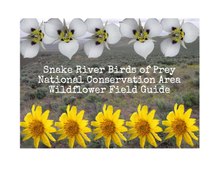Collect and identify plants
The tools of identification are relatively few and simple and are relatively unchanged for the last 200 years- except the zip lock bags. The following tools are part of the field kit, which also includes tools and equipment for specimen collection. Photographs are also a great way to start identifying plants, and doesn't involve any damage to the organism (unless you trample it while taking its photo). Besides comparing your photos to others online or in books, there are also a number of online resources to help you identify your plant in question by plant aficionados throughout the world, and all you need to do is upload yours:
- Plant Identification Public Group on Facebook https://www.facebook.com/groups/156706504394635/
- University of British Columbia Botanical Forum http://forums.botanicalgarden.ubc.ca/forums/plants-identification.38/
If collecting plants instead of just taking photographs, try to do the least amount of damage as possible to the plant and keep in mind the population as a whole. If there are only 5 plants and you dig up 2, then there is a real problem with the long term survival for that population of plants that you've caused. Also if collecting whole specimens make sure that the plant is dying for a good cause. Don't just dig them up, identify them and throw them away. Press them, label them and have plans to send your plant collection to a local university with a herbarium in your area so that others can learn and study them too.
Identification Tool Kit
- Field guide with keys to plants of the region
- A hand lens, to examine plants at close range
- A metric ruler, to measure leaves and other small features
- Ziplock bags to take specimens back to your house for further study and/or to be pressed

Botanists used to carry around a vasculum- metal boxes to hold their plant specimens in temporarily until they were able to get back to their much heavier plant presses, but today we just use plastic bags. If you leave air in the bag and tie it up or zip it shut, it also helps to protect the plant from being damaged by being transported. Heat can wilt specimens rather quickly, so it is best to either study/press them immediately or have a cooler to put them in in very hot conditions. Wilted and crushed plants make for poor herbarium specimens- you might damage key taxonomic features as well, so it is best to keep them as fresh as possible.
Other recommendations for any botanical expedition (outside of your backyard) include:
- Sunscreen
- First Aid Kit including an emergency reflective blanket or mummy bag
- Broad Brimmed Hat
- Sturdy walking shoes
- Backpack
- Lunch
- Map and compass (often places you find wild plants in don't have cell phone coverage and you still don't want to trust Google Maps with your life)
- Headlamp
Recommendations for in house identification:
- tweezers
- dissecting scope
Photographic Field Guide
[edit | edit source]
Links for more information
[edit | edit source]- How to Collect, Press and Mount Plants from the Montana State University Extension Office: - http://store.msuextension.org/publications/agandnaturalresources/mt198359ag.pdf
- How to Identify Plants in the Field from the American Museum of Natural History - https://www.amnh.org/explore/curriculum-collections/biodiversity-counts/plant-identification/how-to-identify-plants-in-the-field/
- Pickling Plants- How to Collect and Preserve Plants for Identification from the University of Wyoming - http://www.uwyo.edu/barnbackyard/_files/documents/magazine/2010/summer/plant-preservation-summer-2010.pdf
- Herbarium Supply- http://herbariumsupply.com/
